
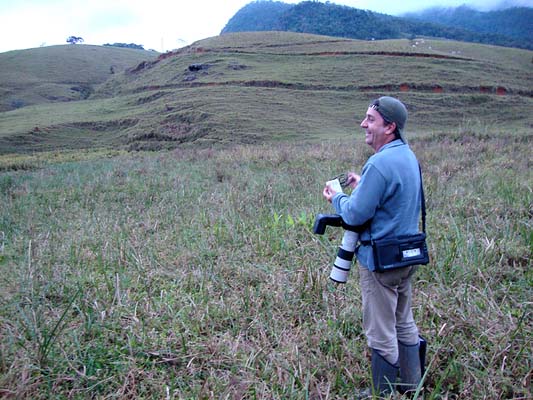 One of the foremost birding highlights of our Brazil trip in 2010 was an excursion from Itatiaia NP to search for Giant Snipe Gallinago undulata.
Edson Endrigo took us to a small cattle-grazed marsh in a shallow
valley (right) northwest of the National Park, and arranged access from
the landowner. Although it looked like a grassy field, there was
standing water under the grass. We waited until dusk when the first
snipe began to call with a loud kek-kek vocalization. Edson
played a tape and suddenly this huge bird — as big as an Eurasian
Woodcock — came lumbering towards us in flight. I was not adequately
prepared for this maneuver, and did not get an in-focus flight shot as
it passed us chest-high (above). We would never have one in flight so
close to us again. [It is noteworthy that Edson's flight shot with his
small flash-unit was absolutely superb.]
One of the foremost birding highlights of our Brazil trip in 2010 was an excursion from Itatiaia NP to search for Giant Snipe Gallinago undulata.
Edson Endrigo took us to a small cattle-grazed marsh in a shallow
valley (right) northwest of the National Park, and arranged access from
the landowner. Although it looked like a grassy field, there was
standing water under the grass. We waited until dusk when the first
snipe began to call with a loud kek-kek vocalization. Edson
played a tape and suddenly this huge bird — as big as an Eurasian
Woodcock — came lumbering towards us in flight. I was not adequately
prepared for this maneuver, and did not get an in-focus flight shot as
it passed us chest-high (above). We would never have one in flight so
close to us again. [It is noteworthy that Edson's flight shot with his
small flash-unit was absolutely superb.]
With patience
we were able to move up on birds calling from the grass. The trick was
to move only when the bird was calling (and presumably distracted) and
stand still when it was quiet. We eventually got views of the huge
snipe on the ground (below).
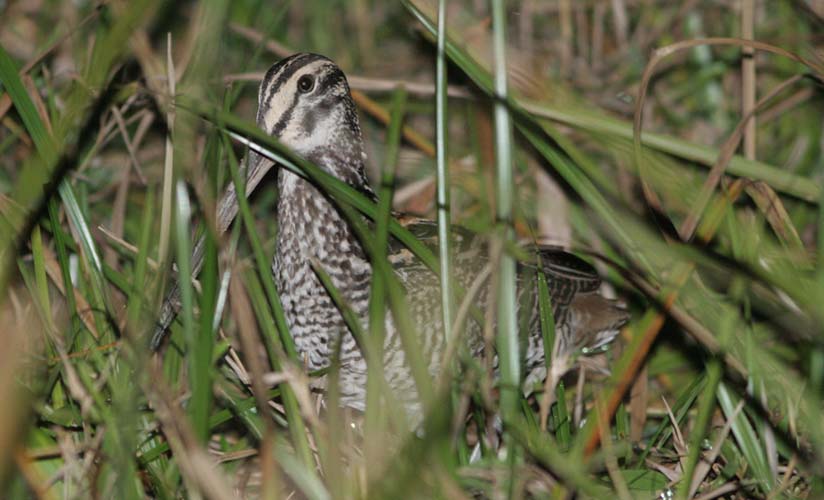
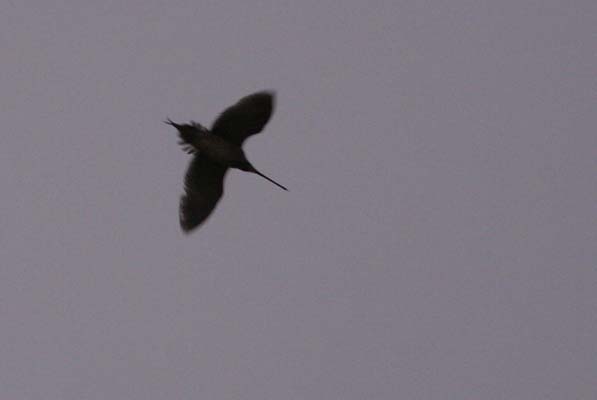 |
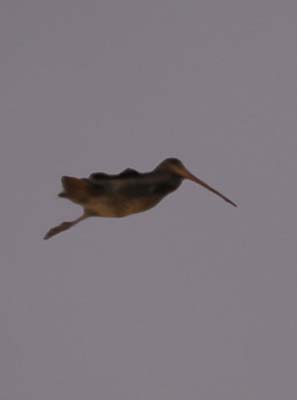 |
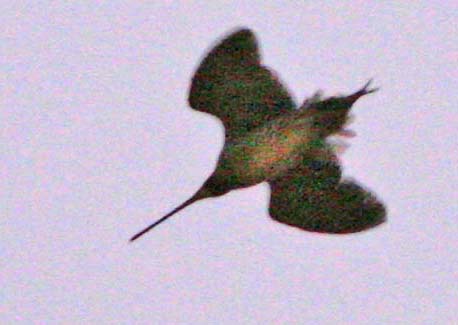 As
it got darker, snipes began to display over the valley. We wound up
seeing or hearing at least 3 birds. A displaying snipe wings high into
the sky and then dives downward towards the marsh (above left), giving
a several-note call and a long buzz. It then glides into the marsh
(upper right). The calls sound vocal but the buzz may be made by the
spread tail feathers, as occurs with smaller snipes (right; this shot
has been lightened in PhotoShop).
As
it got darker, snipes began to display over the valley. We wound up
seeing or hearing at least 3 birds. A displaying snipe wings high into
the sky and then dives downward towards the marsh (above left), giving
a several-note call and a long buzz. It then glides into the marsh
(upper right). The calls sound vocal but the buzz may be made by the
spread tail feathers, as occurs with smaller snipes (right; this shot
has been lightened in PhotoShop).
Giant Snipe is by far the world's largest snipe, and rather little is known about its life history (Handbook of Birds of the World, Vol. 3). There are two subspecies: nominate undulata in Colombia, Venezuela and northern Brazil, and the larger gigantea here in southern Brazil [gigantea is well-named; it is 16-20% larger than the nominate race].
I was able to grab a quick snap of the upperparts of one flying away (below) but mostly it was just overwhelming to view such a remarkable bird in such an unremarkable location.


page created 22 Oct 2010
|
© Don Roberson 2010 |